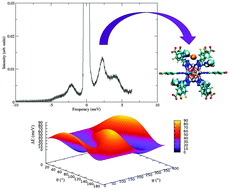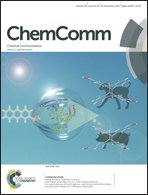A high rotational barrier for physisorbed hydrogen in an fcu-metal–organic framework†
Abstract
A combined inelastic neutron scattering (INS) and theoretical study of H2 sorption in Y-FTZB, a recently reported metal–organic framework (MOF) with fcu topology, reveals that the strongest binding site in the MOF causes a high barrier to rotation on the sorbed H2. This rotational barrier for H2 is the highest yet of reported MOF materials based on physisorption.


 Please wait while we load your content...
Please wait while we load your content...